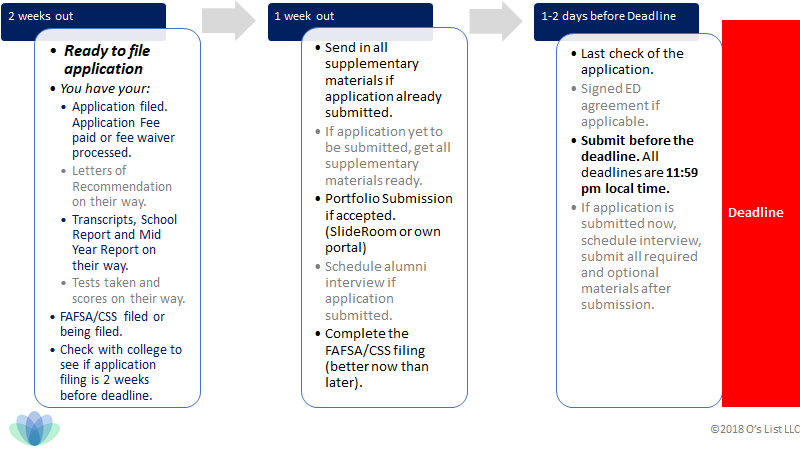Today, many students apply early in their senior year. As early as October or November of the first semester in their senior year. This is because many colleges offer the applicants the option of applying early with an early response on their applications. Usually a student who has applied early will come to know of their admission chances within a few weeks of the deadline. E.g., a student who applies early by Nov 1 will come to know of the admission decision by mid December.
There are 3 kinds of early applications: Early Decision, Early Action and Restrictive Early Action.
Early Decision (ED)
The offer of admission is binding. If offered admission, the student has to accept the offer of admission within a specified time frame and withdraw all other college applications by informing the colleges. The only reason for not accepting an early decision offer is if the student cannot truly afford the college despite the aid package offered. As it is a binding agreement, students usually apply ED to only one college.
Early Action (EA)
The offer of admission is non binding. The students have till May 1 to inform the college of their decision regarding the offer of admission. Students may apply EA to more than one college.
Restrictive/Single Choice Early Action (REA)
A REA offer of admission is non binding and the students have till May 1 to respond. However, if a student applies REA, the student may not apply early to any private college or early decision to any public college. Colleges love early decision/action application rounds. The reason is because it helps them figure out how many students are seriously interested in the college and in the case of ED, how many students are willing to commit to attending and paying for college. The early rounds help the college in resource planning and management for the upcoming year. This is one of the reasons why the acceptance rates are higher in the ED and EA rounds. The acceptance rates in the early decision round can be double to nearly triple the regular decision acceptance rate.
However, they do not fill up the entire upcoming freshman class with early applicants. The reason is manifold. Some of the students who would be a good fit at the college may apply to the college during a regular decision application round. Those students may have either applied early to other colleges or just prefer to apply during the regular decision round. Another potent reason is that some of these students may have also applied to restrictive early action (REA) colleges. So most colleges with early rounds will accept one third to half their incoming class during an early round with the rest of the applicants being offered admission during a regular decision round.
There is really nothing magical about applying early to colleges. It is simply a matter of optimization and can be a win-win situation for the student and the college. However, with early decision as well as to a certain extent with restrictive early action, the student has to be really sure about the college and feel that is the best place to spend the next 4 or more years of their life. Early decision should not be viewed as the way to get into a reach college unless that college is truly a good fit for the student.
Applying early comes with its own timelines and preparation. We put together an informational guide to help.


